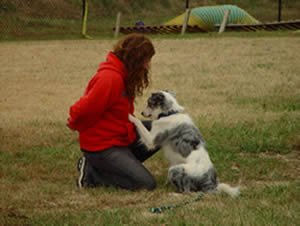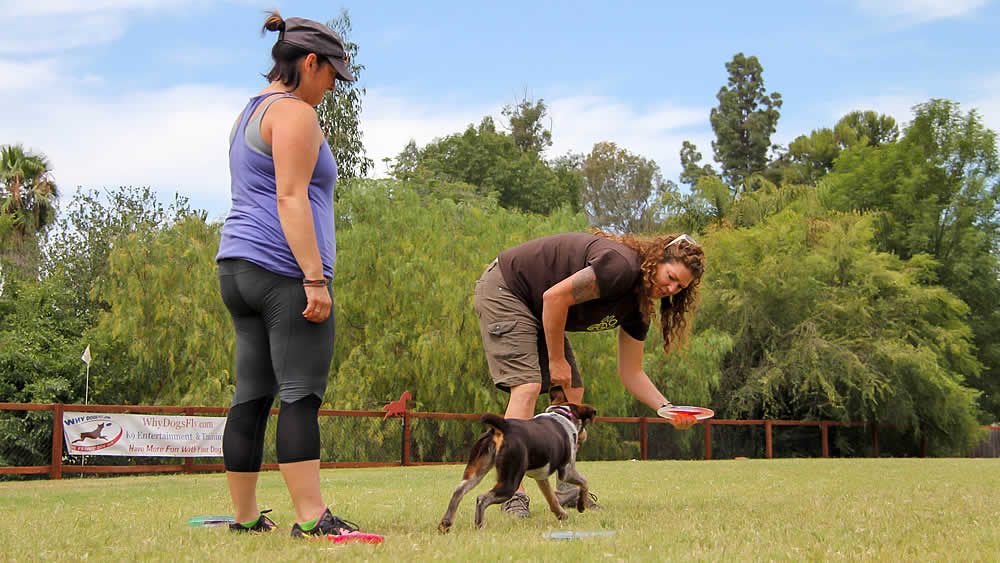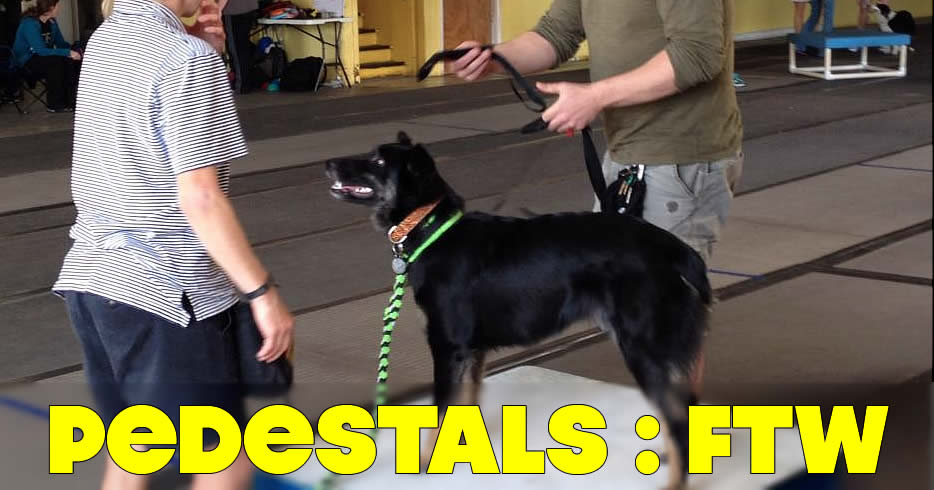
PVybe Disc Dog and Dog Sport Camp – Pedestals FTW
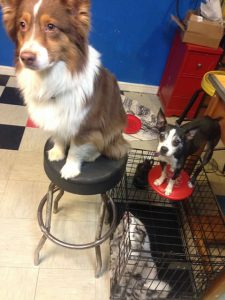
Last week I started a recap of our recent dog sport behavior camp at K-9’s Come 1st in Ft Meyers, FL.
Not to toot our own horns or anything, but we killed it. It was such a cool camp experience for us. I wrote about the Early Birds on Friday and how the led the way to great performance and understanding on Saturday and Sunday.
Having a group that was 1 step ahead of the class was a great benefit and really helped to make the weekend flow, but it was the Pedestals we used to stabilize the dogs that was the real game changer. It allowed us to lay out the basics of our training methodology and deliver practical mechanics, and provided a never ending fountain of opportunity to illustrate and demonstrate our training techniques and to focus instruction. And, by the end of the weekend we had Flyball dogs lying down on their pedestals next to dogs doing bitework and/or handlers who were able to keep their dog engaged and somewhat calm. It was pretty huge.
Camp Outline
What Is a Pedestal?
A pedestal
Spot is a “go to a place”, or “go to a mat” behavior. This means that the dog seeks out and performs a duration behavior on a spot of the handler’s choosing. A... More is a table or raised spot apparatus. Anything the dog can jump up on and hang out can be considered a pedestal. We also used exercise balls and balance discs in this session.
Our idea here was to use the Pedestals as a practical backdrop for our theory instruction and as a structured learning activity for the handlers. Asking teams to perform the simple Pedestal (get up on the pedestal, eat cookies, get off) with proper communication was a terrific vehicle for a practical introduction to our dog sport training foundation.
Localizing the Dog
This was a huge asset to how camp went off and was quite a big deal for both the handler’s of ape!@#$ dogs and dogs who were a bit nervous. These dogs wound up pulling towards and focused on the pedestal area upon coming into the training area. Having 6-7 working dogs out at a time is much easier when your dog has an understanding of a localized work area. It allowed us to run 84 15 minute training sessions per day during camp.
Setting Criteria, Shaping Behavior, and Building Duration
We shaped the pedestals for the most part. Using dog and handler’s behaviors, both good and bad, as an opportunity to capture and shape the appropriate behavior really provided an ongoing and dynamic illustration of our instruction.
We moved from a discussion of classical vs operant and rewarding for position, shoveling food to create value (desire before duration), etc. in the first session to a discussion about criteria, marking, communication and operant conditioning, in the second session. And all the while we were dropping our theory and instruction right over top of this. It was pretty smooth.
By the time we were ready to do bitework the dogs gave attention on their pedestals, the handlers knew how to communicate and how to adjust criteria well enough to understand and run the bitework game to teach a huge variety of skills.
Weaving the Tapestry
I just can’t get over how nice it was to have people working their dogs in the background as Apryl and I were teaching. I was talking for the most part (shocking, I know…) and Apryl was moving around the working group helping people out here and there and delivering the practical performance I was asking for at critical teaching moments. I was moving through the group as well, trying to illustrate or highlight important aspects of our lesson plan.
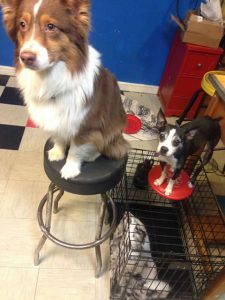
That big giant mindmap up there, we hit everything but 4 or 5 topics, and hit them rather holistically. Everyone got a ton of practical work and a ton of theory and they got a calm dog to boot. Personally, I was skeptical as to whether or not we could cover everything, but as the weekend went on things just fell right into place.
The boring stuff that usually makes people’s eyes glaze over (Theory and Trainer’s Toolbox above)? That stuff was put to use immediately, and was applied in real situations as it was being laid out in words. We were able to isolate moments in training and attach them to specific points in the lecture and then revisit them throughout the weekend.
Our tapestry was functional and interesting to look at. It told the whole story. I think people got it and wove it right into their understanding and practice.
Moving Forward with Pedestals
We’ve had a couple of clients mention their success with Pedestals in Flyball practice and with training in general. It’s no surprise that stuff is like magic. I’m sure they will be moving on with their Pedestal training.
As for us, we use pedestals every day, but we are going to feature pedestals in our Disc Dog Camps. It’s an incredible tool for managing drive and handling reactivity, a huge problem that rarely gets addressed in the disc dog world. It will allow us to quickly and clearly lay out most of our training theory, and you’ll walk out with a dog who can chill in the presence of discs.
How cool is that?






